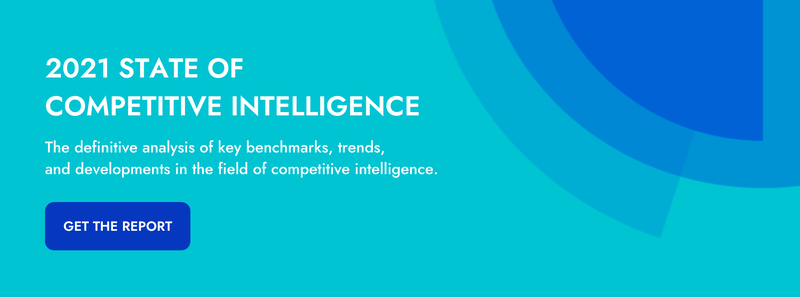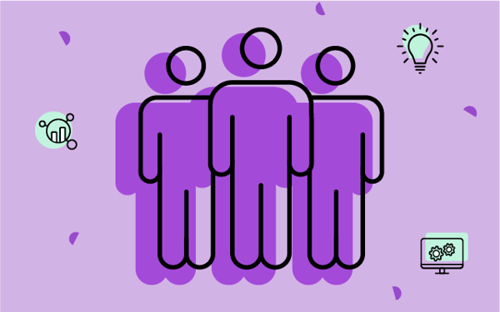With the continuous advancement of technology, the Competitive Intelligence (CI) industry has seen many changes over the last five to ten years. Technology aside, we’ve seen many trends arise that will impact the future of competitive intelligence. We’ve seen changes in how competitive intelligence research is done, the increased competitiveness within most markets, more financial investments in CI programs, and better organizational visibility into competitive intelligence findings. Beyond that, more people are better able to leverage their CI findings across their organizations.
This all sounds pretty great for the CI industry, right? Well it actually gets even better. We asked CI experts about the changes over recent years, and give us a prediction about where they see the industry going. Let’s dive in and see what the experts had to say.
Competitive Intelligence Support Expands to More Teams and Tactical Benefits Too
Competitive intelligence has always been viewed as an important and strategic business function, but one that had very specific action items and benefits attached. Now, CI expands upon simply getting ahead of your competition from a brand and revenue standpoint. More and more CI pros are leveraging their data to help their sales teams and customer success teams perform better at their jobs. Alex McDonnell views the relationship between CI and sales to be one of the most impactful businesses relationships - here’s why.
“I’m seeing more CI professionals eager and willing to support Sales and CS directly, which is awesome. I have a sense that there’s kind of an old guard of CI people that only care to work on “strategic” projects, and resent supporting Sales at the deal-level, which they would dismiss as “ad-hoc requests.”
The CI-Sales feedback loop is what got me hooked on this profession in the first place. A rep can message you in the morning about a customer who’s considering a new competitor, so you piece something together for them quickly. By the end of the day, you have a signal on how well it worked. The next day, that rep is on another call where the customer was venting about the shortcomings of a different competitor, so you follow that tip. The flywheel keeps spinning!”
- Alex McDonnell, Senior Product Marketing Manager, Market Intelligence at InVision
Expanding the Use of Technology Beyond Artificial Intelligence and Machine Learning
One major change that we’ve seen over recent years is the move from fully manual to more automated competitive intelligence programs. Not only were people investing too much time manually aggregating competitive intelligence data, that by the time everything was gathered and analyzed, market shifts could have already happened. Meaning all that hard work couldn’t be acted upon. Even beyond the automation of collecting CI, Joe Booth thinks technology will continue to play a large role in competitive intelligence.
“I think the automation of competitive intelligence is one of the biggest trends; just look at the progression of Crayon. A couple of years ago, when we were evaluating and buying Crayon, it was a very good tool for consolidating data that was out there in the ether. And now, you have the ability to build battlecards, reports, and alerts based off of the data that's automatically collected. So you're able to take action on all of that data while eliminating some of the manual processes.
I think that the consolidation of information was phase one, and the automation of content creation is phase two. What I’m really looking forward to is phase three: capturing win/loss data from the CRM, and incorporating that into the content creation phase. That would be killer - using AI to analyze competitive results, tell us the reasons why we're winning and losing, and helping us win more deals based on the insights discovered from that analysis.”
Translating Win/Loss Analysis to Benefit the Whole Organization
One aspect of a robust competitive intelligence strategy is a focus on win/loss. Learning why you win deals, why you lose, and getting a 360-degree view of that - from both your sales reps point of view (POV) and from the prospect/customer POV - can positively impact your overall strategy. The findings you gather from win/loss analyses can help your sales team strengthen their skills and win more competitive deals.
“More recently, I’ve seen an increased focus on Win/Loss strategies, and a like-minded need to integrate closely with sales teams. Leadership teams crave CI professionals that can be compelling storytellers and can integrate the complete organization into the story.”
- Kimberly Bauer, Competitive Intelligence Expert
Every Sized Business Will be Investing in a Formal Competitive Intelligence Program
Competitive and market intelligence have been popular among enterprise businesses for years. Now that every type of company, and every sized company, is seeing more competition within their market, businesses of all sizes are going to be seeing the value of a formal CI program. We’ve talked about the benefits of CI for startups, and how small companies can leverage CI to displace industry leaders, and now August Jackson is giving his insight about the value of CI for all-sized orgs.
“I’m excited to see formal market and competitive intelligence programs emerge in smaller and less mature organizations. This is a practice that was once confined to the largest and most mature companies. This development gives me hope for the future of the profession, which is great because I love what I do and I see the value this role delivers to our organizations.”
- August Jackson, Senior Director of Market and Competitive Intelligence at Deltek
Competitive intelligence has evolved a lot over the years. What was previously a manual process is now transformed by the use of AI and Machine Learning. The benefits of CI are expanding beyond traditional means, and CI pros are taking the time to help their sales and customer success teams sharpen their skills by leveraging competitive information. Speaking of sales, sales teams are putting a bigger emphasis on win/loss data, and using that information to win more competitive deals. With all of these benefits, it’s no wonder that businesses of all sizes are integrating competitive intelligence into their business.
What are your biggest predictions for the competitive intelligence industry? Let us know in the comments below!

Related Blog Posts
Popular Posts
-
 How to Create a Competitive Matrix (Step-by-Step Guide With Examples + Free Templates)
How to Create a Competitive Matrix (Step-by-Step Guide With Examples + Free Templates)
-
 The 8 Free Market Research Tools and Resources You Need to Know
The 8 Free Market Research Tools and Resources You Need to Know
-
 Sales Battlecards 101: How to Help Your Sellers Leave the Competition In the Dust
Sales Battlecards 101: How to Help Your Sellers Leave the Competition In the Dust
-
 6 Competitive Advantage Examples From the Real World
6 Competitive Advantage Examples From the Real World
-
 How to Measure Product Launch Success: 12 KPIs You Should Be Tracking
How to Measure Product Launch Success: 12 KPIs You Should Be Tracking





